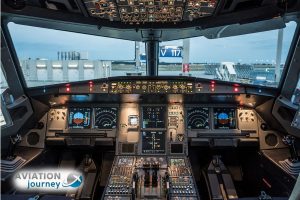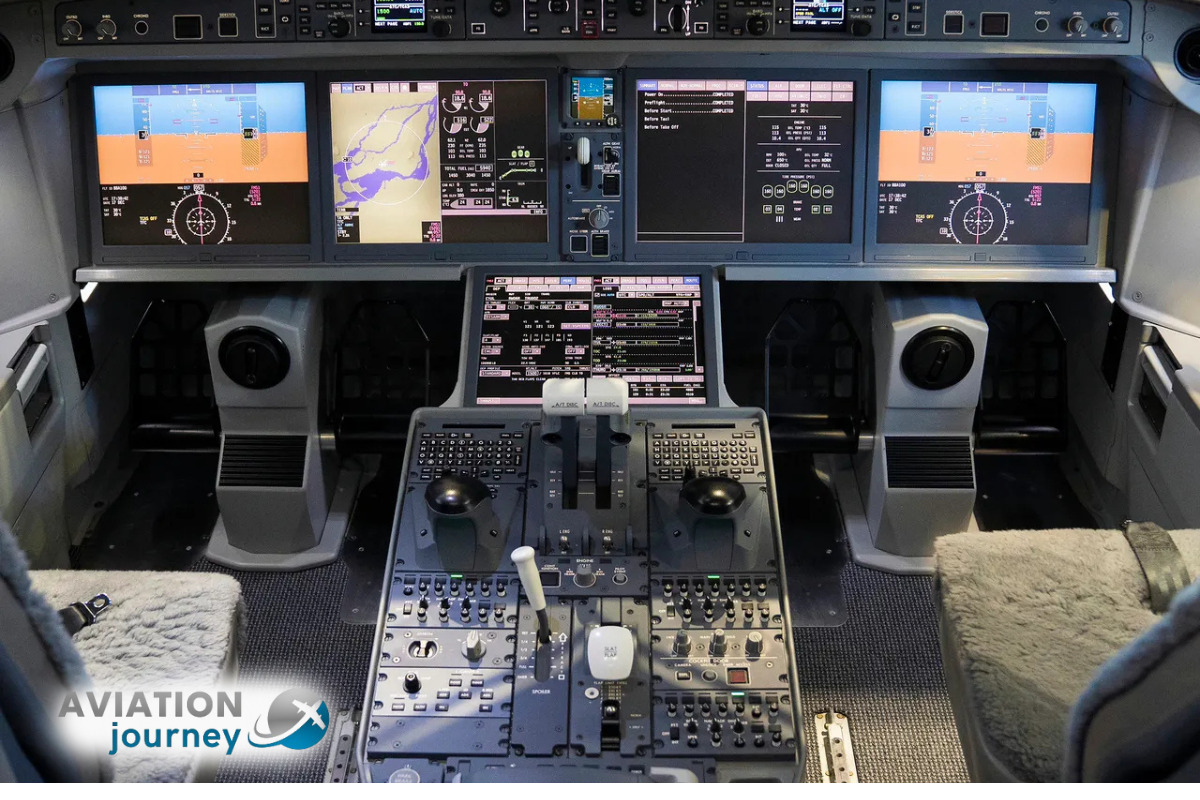A320 Cockpit : Design, Functionality, and Innovation
Airbus A320 cockpit is a masterful combination of future avionics, ergonomics, and ease of use. Created to be safe, efficient, and comfortable, it gives silky smooth flight to the pilots. However, as a system, it was both praised and criticized by the aviation professionals. In this article, A320 cockpit is objectively evaluated, weighing its design, ease of use, and innovation against a critical perspective. Where we give high priority to operational competency, we also suggest limitations that border upon pilot performance and airplane handling.
Sophisticated Design of the A320 Cockpit
The A320 cockpits employ a fly-by-wire system, substituting electronic signals with mechanical controls in aircraft orders. The technology has reduced response time and smoother operation, particularly during unfavorable conditions. The sidestick control instead of a yoke provides the pilots with more leg space and enhanced visibility. Glass cockpit technology blends electronic screens with real-time information presented in an organized and interactive manner. The design strategy enhances the simplification of pilots‘ workload and the situational awareness of flight operations.
Ergonomics and Pilot Interface
From a point of ergonomics, the A320 cockpit fosters comfortability and handling simplicity of flights across levels of pilots’ experience. Seats can be adjusted to provide long-range comfortability and minimize error rates in fatigue. The control panels are within easy reach, thereby making switching of systems easy. Airbus engineers have been careful about the location of straightforward switch and display settings. Consequently, pilots get less time spent searching for controls and more flight managing time.
Important A320 Flight Deck Features
- Fly-by-wire system offers precision and security with automated flight envelope protection.
- Electronic Flight Instrument System (EFIS) integrates flight data into six high-resolution color Liquid Crystal Displays.
- Side-stick controllers provide unobstructed visibility and greater personal space than yokes.
- Flight Management and Guidance System (FMGS) precludes navigation workloads to pilots.
- Centralized Fault Display System (CFDS) alerts operators of system faults, allowing in-flight maintenance to be optimized.
Integrations of Technology in A320 Cockpit Systems
A320 utilizes software automated systems that adjust on their own based on altered states of the environment and phases of flight. For example, FMGS calculates optimal flight paths and speeds, optimizing operational efficiency. ACARS is utilized by the systems for communications to stay away from voice air traffic control instructions. The pilots enjoy a lighter workflow with more decision-support under this unification. Pilots are able to concentrate on strategy without worrying about procedures.

Limitations of the A320 Cockpit
- Excessive reliance on automation can impair pilots’ hand flying ability on timescales of years.
- Poor provision of touch feedback in pilots’ sidestick controllers can lead to potential miscommunication with dual-control inputs.
- Lack of touchscreen on legacy-generation aircraft restricts user interface refresh compared to newer aircraft.
- Cognitive system inconsistency sometimes overloads pilots during high-stakes phases such as takeoff or descent.
- Steep learning curve in transitioning pilots not familiar with Airbus philosophy or interface style.
Training Requirements and Learning Curve
Similarly, adapting to the A320 cockpit requires professional training due to its unconventional configuration and automation logic. While the majority prefer the classic Airbus procedures as being more beautiful, others find it challenging due to its abstracted interface. Simulated training is required in order to learn the aircraft’s logic systems. Younger pilots undergo type-rating courses for a few weeks before line training. Specialized training ensures safe operation under normal and abnormal conditions. So ,even intensive training avoids mistakes in stressful situations.
Safety Innovations of the A320 Cockpit
Likewise, A320 cockpits possess Terrain Awareness and Warning Systems (TAWS) that warn pilots in case of potential collision with the ground. Traffic Collision Avoidance Systems (TCAS) also save aircraft from mid-air collision threats by providing auto-manoeuvre instructions. Such technology greatly reduces the chances of human error- or vision-related accidents. So, airbus continues to update such systems, and this makes the A320 a safer option for commercial airlines globally.
also see : Luxurious Airbus A321 First Class Cabin Experience
Communication and Collaboration Features
In spite of automation, Airbus still has manual overrides as a contingency option. There is also a Crew Resource Management (CRM) system in the cockpit that promotes teamwork. The audio management units and headsets are combined to facilitate multi-channel communication without the need for channel switching. Standard Operating Procedures (SOPs) keep coordination among the crew through teamwork in emergency procedures. These design elements reduce miscommunication and allow mutual awareness. Thus, flight crews are therefore kept in harmony even in very high-pressure operations.
Conclusion
To conclude, there is an excellent mix of innovation, simplicity of operation, and efficiency in use. The cockpit is an ergonomically delightful, information-dense, and safety-conscious environment conducive to commercial aviation high performance. There is no perfect system, however—weaknesses such as dependency on automation and feedback restraint need continued refinements. All the same, A320 cockpit is a benchmark against which aviation is compared, a mix of technology and human factors application.
FAQs
Why is the A320 cockpit different from Boeing aircraft?
The A320 cockpit is equipped with sidesticks and fly-by-wire system, whereas Boeing has conventional yokes and mechanical flight control systems.
Is it difficult to master the A320 cockpit by new pilots?
Yes, as it is something that has to be acquired through type-rating and simulation training because it contains special systems and automation setup.
How does the cockpit of the A320 enhance safety?
It contains advanced systems such as TCAS, TAWS, and CFDS, which are all used to enhance situational awareness and reduce error.
Can pilots manually override A320 automation?
Yes, the pilots can override automatic systems using manual controls during an emergency or system failure.
Is the A320 cockpit comfortable on long-distance flights?
Yes, and with adjustable chairs, rationalized panel arrangements, and ergonomic design for comfort over the long haul.

